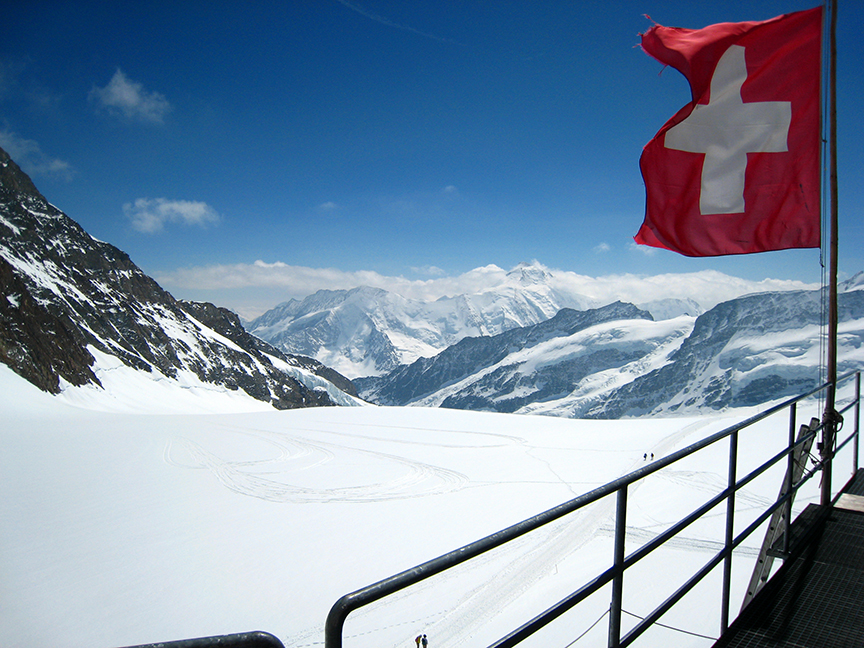In early August 1291, three alpine cantons, Uri, Schwyz and Unterwalden, signed a treaty of allegiance with each other that is widely regarded as the official founding of Switzerland. In honor of that day, we’ve posted five fun facts that you probably didn’t know about the Swiss flag.
1. The Swiss flag is nearly 700 years old.
Switzerland’s white cross (the Swiss Cross) on a red background dates to the Battle of Laupen which occurred in 1339 in the canton of Bern. Legend has it that Swiss soldiers, fighting for the Swiss Confederacy, sewed a white cross onto their banners and armor to distinguish themselves from the enemy. Eventually, the white cross was adopted by all Swiss soldiers.
2. The Swiss flag almost died.
Following a defeat against the French army at the Battle of Marignano in 1515, the white cross on a red background fell out of widespread use, only popping up with occasional mercenary skirmishes here and there until the 1800s. Napoleon introduced a tricolor national flag of green, red and yellow during the Helvetic Period (1798-1803), but the flag quickly disappeared along with the Helvetic Republic. The white cross on a red background resurfaced in 1840 and was officially adopted as the national flag of Switzerland in 1848. This is the Swiss flag that we know today.
3. The Swiss flag is perfectly square.
The Swiss flag is one of only two square-shaped national flags in the world. The other square-shaped flag belongs to Vatican City. While you do see rectangular Swiss flags flying on vessels, (this is called a civil ensign or merchant flag), the official national flag of Switzerland is perfectly square.
4. It’s not just any old white cross on a red background.
The Coat of Arms Protection Act (CAPA) states, “The Swiss Cross is a white, upright, free-standing cross depicted against a red background, whose arms, which are all of equal size, are one-sixth longer than they are wide.” The red color of the flag is also defined by Swiss law as: CMYK 0 / 100 / 100 / 0, Pantone 485 C / 485 U and RGB 255 / 0 / 0. The Hexadecimal value is #FF0000. Designers take note!
5. The International Red Cross has roots in the Swiss flag.
The International Red Cross emblem (red cross on a white background) was designed as the inverse of the Swiss flag in honor of a Swiss man named Jean-Henry Dunant. Dunant was a Swiss businessman who, through his advocacy work, inspired the creation of the International Committee of the Red Cross in 1863.
So now you know about the Swiss Flag! Go forth and amaze your friends at your next fondue party.





